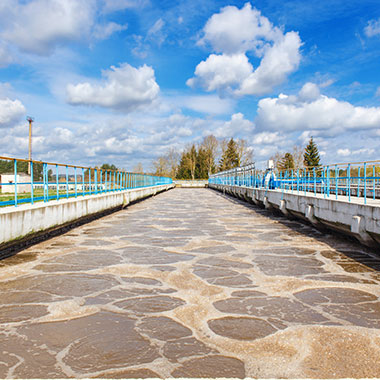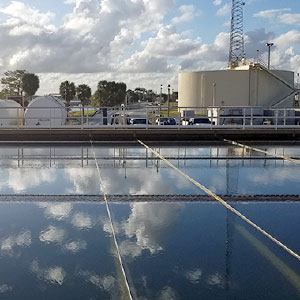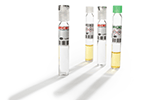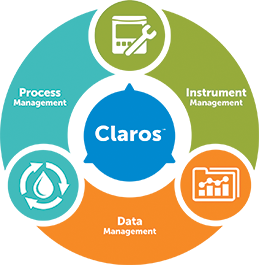-
Products
-
Lab Instruments
Other Instruments
-
Lab Meters and Probes
Calibration Standards Radiometer ProbesOther Reagents
- Chemistries, Reagents, and Standards
-
Online Analysers
Ammonium Analysers Ammonia Monochloramine Chlorine Analysers
- CL17sc
- CL10sc Amperometric
- 9184 sc Amperometric
- Ultra Low Range CL17sc Colorimetric Chlorine Analyser
EZ Series Analysers- Iron
- Aluminium
- Manganese
- Phosphate
- Chloride
- Cyanide
- Fluoride
- Sulphate
- Sulphide
- Arsenic
- Chromium
- Copper
- Nickel
- Zinc
- Ammonium
- Total Nitrogen
- Total Phosphorus
- Phenol
- Volatile Fatty Acids
- Alkalinity
- ATP
- Hardness
- Toxicity
- Sample Preconditioning
- Boron
- Colour
- Nitrate
- Nitrite
- Silica
- Hydrogen Peroxide
- EZ Series Reagents
- EZ Series Accessories
- EZ sc Series Inorganics
- EZ sc Series Metals
- EZ sc Series Nutrients
-
Online Sensors and Controllers
Digital Controllers (Transmitters) Controllers (Analogue)
- SC4500
- Orbisphere 366x Ex
- Orbisphere 410/510 Carbon Dioxide
- Orbisphere 410/510 Oxygen
- Orbisphere 410/510 Ozone
- Orbisphere 51x Hydrogen
Single, Dual, Multi-parameter Online Panels pH & ORP Sensors- 1200-S ORP
- 1200-S pH
- 12mm pH/ORP
- 8362 sc High Purity
- Combination pH/ORP
- Differential pH
- Digital Differential ORP
- Digital Differential pH
- LCP ORP
- LCP pH
Conductivity Sensors- 3400 Analogue Contacting
- 3400 Digital Contacting
- 3700 Analogue Inductive
- 3700 Digital Inductive
- 3798 sc Electrodeless
- 9523 Cation Conductivity
- 9525 DCCP System
-
Automated Lab Systems
Robot Systems
- Multiparameter Online Panels
- Claros Water Intelligence System
- Samplers
- Test Kits & Strips
-
Lab Equipment and Supply
Apparatus
- Brushes
- Clamps, Rings & Stands
- Crucibles
- Crucibles & Casseroles
- Dispensers & Droppers
- Grab Samplers
- Oil and Grease
- Other Apparatus
- Pipet Aids
- Pipettes
- Racks
- Stir Bars
- Tubing
- Weighing Accessories
General Lab Consumables Glassware/PlasticwareInstruments -
Microbiology
Accessories and Chemicals Dehydrated MediaLabware
- Electrochemistry
-
Lab Instruments
- Parameters
-
Software Solutions
-
Claros Water Intelligence System
Product Pillars Process Management
- Solutions For:
- BOD/COD Removal
- Nitrification/Denitrification
- Phosphorous Removal
- Sludge Management
Data Management- Solutions For:
- Collection
- Visualization & Analytics
- Reporting
- Data Accuracy
Instrument Management- Solutions For:
- Maintenance
- Troubleshooting
- Remote Access
- Lab and Process Comparison
Industry Challenges Regulatory Compliance Cost Savings Remote Operations Process Optimisation Equipment Maintenance
-
Claros Water Intelligence System
- Industries
- Service
- News & Events
Ireland
Choose your country or region:
Europe
Americas
Asia - Australasia
- Australia
- Mainland China
- India
- Indonesia
- Japan
- Malaysia
- New Zealand
- Philippines
- Singapore
- South Korea
- Thailand (Thai)
- Taiwan
- Vietnam
Middle East - Africa
Solids (Total & Dissolved)
What are Total Suspended Solids (TSS)?
Total suspended solids (TSS), harmful in excess and listed as a conventional pollutant in the Clean Water Act, can indicate the quality of any water specimen, from ocean water to wastewater.
When water is poured through a pre-weighed filter, the particulate matter that remains after the filter dries is classified as TSS. This type of measurement provides an actual dry weight of suspended solids, so water quality professionals often pair TSS measurement with their standard turbidity measurements to develop site-specific correlations that can help create time-saving efficiencies.
What are Total Dissolved Solids (TDS)?
Dissolved solids, smaller than 2 microns, refer to any minerals, salts, metals, in the form of molecules, atoms, cations or anions dissolved in water. Total dissolved solids (TDS) comprise inorganic salts (principally calcium, magnesium, potassium, sodium, bicarbonates, chlorides and sulfates) and some small amounts of organic matter that dissolve in water.
The TDS concentration is the sum of all filterable substances in water that can be determined gravimetrically. However, in most cases, TDS is primarily comprised of ions. TDS is mainly used in the studies of water quality in the natural bodies of water, including surface and ground sources.
Environmental Impacts of Solids
High levels of total suspended solids can affect turbidity, increase water temperatures and decrease dissolved oxygen (DO) levels. This can cause the water to heat up more rapidly because the suspended particles absorb more heat and deplete oxygen, which can adversely affect aquatic life. Higher levels of solids also slow down photosynthesis by aquatic plants by reducing light transfer. Concentrations of TDS that are too high or too low may limit aquatic plants growth and may lead to the death of many marine organisms.
Water with high amounts of dissolved solids is unpalatable for consumers and may be unsuitable for bathing or cleaning.
Why Measure Total Suspended Solids?
High levels of suspended solids can affect the performance of filtration systems, capital equipment and plumbing systems.
High amounts of suspended solids in lakes, reservoirs, rivers and streams can have harmful effects on the ecological system. Monitoring solids downstream of discharge from sewage treatment plants, industrial plants or extensive crop irrigation is crucial to maintain the overall health of the receiving water bodies.
Suspended solids instruments from Hach ® provide solutions for measuring solids and turbidity in standard drinking water, wastewater and industrial process applications. Instruments feature self-cleaning options and unique technology to improve the precision and accuracy of measurements as well as options for use within hazardous zones.
Why Measure Total Dissolved Solids?
TDS in drinking water can originate from natural sources, urban run-off, municipal and industrial waste, chemicals used in treating water and the actual plumbing infrastructure.
While TDS is not considered a primary pollutant, it is an indicator of water quality. The USEPA secondary water quality standard for TDS concentration is 500 mg/L to ensure drinking water palatability. High levels of dissolved solids in drinking water can affect the taste causing it to be bitter or salty. High levels of TDS can also lead to scaling and corrosion in any application but especially in boilers and cooling water.
At Hach, find the testing equipment, resources, training and software you need to successfully monitor and manage TSS and TDS levels in your specific application.
Featured Products to Measure Solids
Hach's Digital Solitax sc Process Probes are designed for the accurate determination of turbidity and suspended solids.
Learn MoreHach’s TSS Portable turbidity, TSS, sludge blanket level probe uses a unique multi-beam alternating light method with infrared diode system that gives it a broad measuring range.
Learn MoreHach's TSS sc are special digital probes for determining turbidity and suspended solids in aqueous and aggressive media.
Learn MoreMicrobiological filters, from a variety of reputable manufacturers, that can be used for measuring solids are available through Hach.
Learn More
Which Processes Require Total Suspended Solids Monitoring?
Wastewater Treatment
Monitoring suspended solids/turbidity in the liquid processing stages of a wastewater treatment plant offers these significant benefits:
- Improves plant efficiency by providing stability and continuity to the treatment process
- Continuous online monitoring reduces the need for time consuming laboratory analysis
- Real-time monitoring provides more accurate process control
- Monitors compliance with limitations placed on the concentration of solids entering and leaving the plant
At the same time, laboratory methods and equipment can be successfully used to verify or fulfill the calibration of the process sensors.

Drinking Water Treatment
Drinking water comes from many different sources, such as rivers, lakes, aquifers and man-made reservoirs. Treatment processes for source water vary widely depending on the source itself, as well as the impurities of the source water. Some of the most common contaminants in source water are the suspended solids comprised from organic matter, like algae, and inorganic materials, e.g. sand, silt and clay particles. Knowing total suspended and dissolved solids in the incoming water helps to determine the right treatment processes and procedures (e.g. coagulation/flocculation agents) to reduce load on the filters.
In order to optimize the coagulation/flocculation part of your Drinking Water treatment process, another tool can be very useful – a Streaming Current Monitor (SCM) that measures change in the charge of particles in the water immediately after coagulant injection and helps to optimize the coagulant feed in real time, especially when combined with pH control.
Monitoring TSS/ turbidity and TDS/conductivity in the raw and treated water helps to maintain consistent water quality and its corrosivity to comply with relevant regulations.
Besides monitoring of the water used in the treatment process, it is important to measure TSS or turbidity during filter backwash operation because it helps in the process optimization, extends filter run times and provides additional savings on the energy cost.

Energy Industry
High purity water is essential for power production. The amount of suspended solids present in water is a vital quality indicator. Silt, sand, bacteria, spores and chemical precipitates all contribute to the cloudiness or turbidity of water. As a result, turbidity or TSS monitoring is critical for maintaining the acceptable water quality throughout the power plant.

How are Solids Monitored?

Laboratory Testing
Analyzing solids in the laboratory involves trapping the solids suspended in the water sample onto the filter, using a filtering apparatus and determining the dry weight of these solids.
Gravimetric Method
Volatile, Non-Filterable Solids
Direct Measurement
Imhoff Cone
Electrochemical
Online Process Testing
Frequently Asked Questions
What is the procedure for conditioning or preparing the glass fiber filters used in TSS methods?
The non-preweighed glass fiber filters are not pre-washed. Hach does not have a specific procedure to provide for preparing the filters. It is recommended to prepare or condition the filters per Standard Methods 2540 D requirements.
Can turbidity be measured in place of suspended solids?
Although suspended solids will cause turbidity, a turbidity measurement is not the same as a measurement of suspended solids. A suspended solids measurement, as defined by the USEPA, determines the amount of solids in a sample by weight, where a turbidity measurement shows how the suspended solids scatter light. When the particulate makeup of the sample changes, the light scattering characteristics of the sample may change in an unpredictable way. If the particulate makeup of the sample is known to be consistent over time, it may be possible to establish a correlation and then use turbidity measurements to estimate the level of suspended solids.
This would require making a calibration curve of suspended solids (determined gravimetrically) versus measured turbidity values (NTU) for a series of samples with varying levels of suspended solids. Even in these cases, many samples do not exhibit a linear relationship between suspended solids (ppm) and turbidity value (NTU). This can be caused by interferences such as color, particle shape, distribution and light absorption. For example, a natural sample showing a turbidity of 500 NTU often shows a turbidity of substantially more than 100 NTU when diluted 5-to-1 with distilled water.
What is the relationship between TS, TDS and TSS?
Total solids (TS) is the sum of both the total suspended solids (TSS) and total dissolved solids (TDS) in the process of water: TS = TSS + TDS.
Why does the Solitax sc read incorrectly for total suspended solids but correct for turbidity?
The Solitax sc sensor has an infrared (IR) LED as a light source and two detectors. One detector is located at a 90° beam scatter to measure turbidity and the other detector is located 140° from the beam as a back-scatter reference. Turbidity measurement is done by a factory calibration using the 90° angle. Suspended solids measurement uses both detectors 90° and 140°.
Measuring suspended solids requires calibration to the actual sample to optimize the compensation for the particle size and shape typical at the measuring site. If the solids readings are incorrect by significant factors, which calibration cannot correct, then clean the optical device with 10% HCl prior to conducting a grab sample analysis for recalibration. Make sure that grab sample analysis is appropriately conducted by suitable laboratory methods.
If the issue is still ongoing, the second detector may not be operating correctly and then the instrument must be serviced by Hach personnel in either the field or on the service bench.
How does the IntelliCAL ® CDC401 determine TDS and why might results not match lab analysis?
TDS results are derived from conductivity. The CDC401 uses a TDS factor of 0.5 based on sodium chloride by default. This factor can be adjusted and for best accuracy, it should be determined by a regulatory approved gravimetric method, such as Hach method 8163. Gravimetric methods determine true solids content by a combination of filtering, evaporation and weight.
CUSTOMER SUPPORT
- Service
- Safety Data sheets (SDS)
- Certificates of Analysis
- Form for Ringtests
- COD/REACH
- CLAROS
- Certificate ISO 9001:2015
- Certificate ISO 14001:2015
- Certificate ISO 45001:2018
- Water Analysis Solutions – for Lab & Field
- Producer Register Limited (PRL)
Number: IE 0309 2 W B






